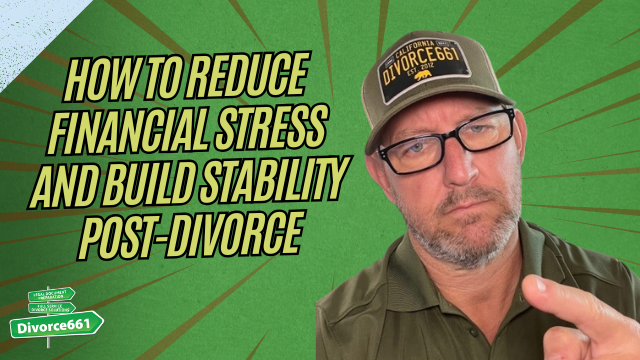How to Reduce Financial Stress and Build Stability Post-Divorce
Hi, I’m Tim Blankenship of Divorce661. In my video I walk through practical steps to reduce financial stress and build lasting stability after a divorce. Going from shared finances to handling everything on your own is overwhelming, but a clear plan makes a huge difference. Below you’ll find a step‑by‑step guide you can use right away—budgeting basics, how to create an emergency fund, ways to cut high‑interest debt, and real actions that turn financial chaos into confidence.
Why financial clarity matters
One of the biggest sources of stress after divorce is uncertainty. Not knowing exactly what you earn, what you spend, or what you owe creates anxiety that affects decision‑making. The first step toward peace of mind is getting a clear, realistic view of your finances.
Start by mapping your cash flow
- List all income sources (paychecks, alimony, child support, side work).
- Track monthly expenses for at least 30 days—every subscription, bill, and small purchase.
- Record outstanding debts and interest rates (credit cards, personal loans, auto loans).
- Separate essentials from discretionary spending to see where adjustments are possible.
Build a monthly budget you can actually use
Create a realistic, month‑by‑month budget that begins with essentials: housing, utilities, food, transportation, insurance, and childcare. After covering essentials, allocate remaining dollars intentionally for:
- Savings (emergency fund)
- Debt repayment (focus on high‑interest first)
- Critical irregular expenses (car maintenance, medical, taxes)
- Small discretionary spending so the plan is sustainable
Budgeting isn’t about perfection—it’s about control. When you know where every dollar is going, you can make confident choices instead of reacting out of stress.
Build a safety net: start an emergency fund
Saving even a small amount each month reduces the temptation to use credit when unexpected expenses pop up. Your goal should be to create a safety net that prevents short‑term shocks from becoming long‑term crises.
Emergency fund guidelines
- Begin with a short‑term target: $500–$1,000 to cover immediate surprises.
- Gradually build toward 3 months of essential expenses, then 6 months as capacity allows.
- Automate transfers to a separate savings account so saving happens without daily decisions.
Reduce high‑interest debt and cut unnecessary costs
High‑interest debt (credit cards, payday loans) is one of the fastest ways to keep you trapped in financial stress. Tackle it with a plan and look for opportunities to lower your monthly obligations.
- Prioritize paying off high‑interest balances first while making minimum payments on other accounts.
- Contact lenders to negotiate lower rates or explore refinancing options for loans with high interest.
- Audit recurring charges and cancel unused subscriptions—those small monthly fees add up.
- Look for quick wins like refinancing a high‑interest loan or renegotiating insurance.
We worked with a client who was feeling completely underwater after her divorce. Once we helped her organize her expenses, cancel unnecessary subscriptions, and refinance a highinterest loan, she saved over $600 a month. That money went straight into an emergency fund and her stress dropped overnight.
This real example shows how organization + targeted changes = immediate relief.
Practical tools and habits that work
- Use simple budgeting templates or apps to track income and expenses.
- Set up automatic bill pay and automatic transfers to savings to reduce decision fatigue.
- Create a short checklist for monthly financial maintenance (review subscriptions, check balances, update budget).
- Build a support team: financial coach, accountant, or a divorce professional who understands post‑marriage finances.
How Divorce661 helps you move forward
At Divorce661 we do more than finalize paperwork. We help you build the foundation for a financially secure future by providing checklists, budgeting tools, and real‑world guidance so you can regain control and confidence.
If you’re feeling overwhelmed, start with a conversation. Schedule a free consultation at Divorce661.com and we’ll help you organize your finances, make smart adjustments, and create a plan that brings stability and peace of mind.
Conclusion: small steps, big impact
Post‑divorce life is a major transition, but financial stress doesn’t have to define it. Get clarity on your finances, build a practical budget, create an emergency fund, and attack high‑interest debt. Small, consistent changes—like canceling unused subscriptions or refinancing a loan—can free up hundreds of dollars a month and transform your sense of security.
Take one step today: map your income and expenses, then pick one quick action (cancel a subscription, set up an automatic transfer, or call a lender). Momentum starts with a single move, and you don’t have to do it alone.

